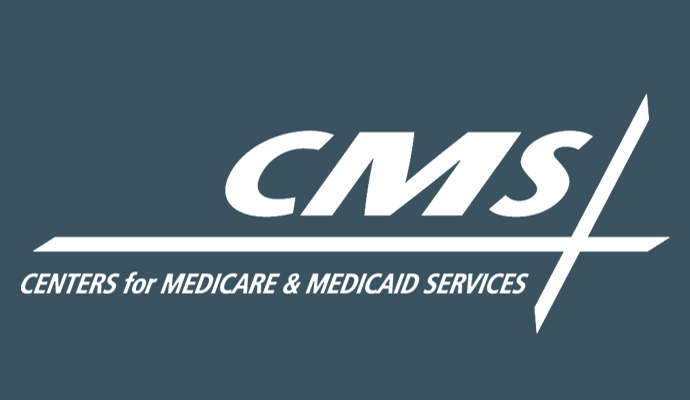CMS Offers Provider Resources for Public Health Emergency Ending
The agency released provider-specific fact sheets that detail which waivers and flexibilities will terminate once the COVID-19 public health emergency ends.

Source: CMS Logo
- CMS has released guidance to help healthcare providers prepare for the eventual end of the COVID-19 public health emergency (PHE) and the accompanying waivers and flexibilities.
When the pandemic hit, CMS used emergency authority waivers, regulations, enforcement discretion, and sub-regulatory guidance to help providers respond to COVID-19 and maintain patient access to care. Most of these waivers and flexibilities are set to expire at the end of the PHE.
The current end date of the PHE is October 15, 2022. However, another 90-day extension is expected as HHS Secretary Xavier Becerra said he would give states and providers a 60-day notice before ending the PHE.
Even though the PHE is likely to last into 2023, CMS has encouraged healthcare providers to prepare for the return to pre-pandemic health and safety standards and billing practices.
The agency developed a strategic initiative to evaluate PHE blanket waivers and flexibilities to determine their status once the PHE ends. The assessment consists of three phases.
The agency is assessing the need for continuing certain blanket waivers based on the current state of the PHE. CMS is also determining which flexibilities would be helpful in future PHEs to ensure communities maintain access to healthcare services should another emergency occur.
CMS is continuing to collaborate with federal partners and healthcare stakeholders to ensure preparedness for future emergencies. For example, the agency launched The CMS National Quality Strategy in April 2022 to ensure that all individuals have access to high-quality, value-based care.
The agency has developed a roadmap that details all of the PHE blanket waivers that will terminate once the PHE is over.
CMS is considering making some of the flexibilities permanent, including waiving the requirement that a nurse practitioner, physician assistant, or certified nurse-midwife be available to provide patient care at least 50 percent of the time at rural health clinics and federally qualified health centers.
The agency has also released a series of fact sheets to help providers prepare for the end of the PHE. The fact sheets summarize the status of Medicare blanket waivers and flexibilities by provider type. The fact sheets include information about flexibilities related to Medicaid as well.
CMS plans to continuously update the information to share which waivers and flexibilities are terminated, which have been made permanent, and which ones will end when the PHE concludes.
Since the PHE began, CMS has solidified and terminated different flexibilities and waivers.
In May 2020, the agency created a requirement for nursing homes to report resident and staff infections and deaths related to COVID-19. This provision was initially set to end with the PHE, but CMS extended the requirement in the 2023 Home Health rule to December 2024.
Additionally, some flexibilities have been extended by Congress, including access to telehealth services. Telehealth waivers that expanded the types of healthcare professionals who can provide telehealth services and allowed coverage for audio-only telehealth have been extended to end 151 days after the PHE concludes.
CMS terminated other flexibilities that proved necessary during the first few months of the pandemic but were no longer needed in the current stage.
“CMS is continuing to support stakeholders and the people we serve during this phase of the pandemic while looking forward to a health system that successfully emerges from the PHE focused on making increased gains in quality and safety,” the blog post stated.
“As the agency identifies opportunities for improvement, the needs of each person and community served will be considered with a health equity lens to ensure our analysis, stakeholder engagement, and policy decisions account for health equity impacts on members of underserved communities and health care professionals disproportionately serving these communities.”
